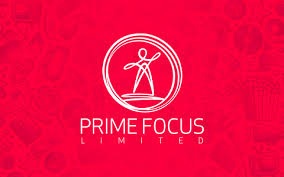MLC Fire Detection Systems
A fire alarm system is a building system designed to detect, alert occupants, and alert emergency forces of the presence of fire, smoke, carbon monoxide, or other fire-related emergencies. Fire alarms are found in Offices, Factories, and public buildings; they are part of our everyday routine but are often overlooked until there is an emergency at which point, they might just save our lives.
The four ways your fire alarm system works to protect your property and its occupants from the dangers of fire are by detecting fire, alerting occupants, managing risk, and notifying the fire department.
Smoke alarms detect fires by sensing small particles in the air using a couple of different kinds of technologies. Once they detect those particles above a certain level, they signal the alarm to sound so that you and your family can get to safety. The fire alarm system is designed to alert us to an emergency so that we can take action to protect ourselves, staff and the general public.
Whatever the method of detection is, if the alarm is triggered, sounders will operate to warn people in the building that there may be a fire and to evacuate.
The fire alarm system may also incorporate a remote signal system which could then alert the fire brigade via a central station.
The “Brain” of the fire detector system is the Fire Alarm Control Panel. It is the central hub for all of the detector signals to be wired to and provides a status indication to the users.
The unit can also be set up to simulate an alarm for use in routine Fire and evacuation drills, so all staff knows what action to take in the event of a real fire.
Different Types of Fire Alarm Detectors:
- Heat detectors
- Smoke detectors
- Carbon Monoxide detectors
- Multi-sensor detectors
- Manual Call Points

Different Types of Fire Alarm Systems
Fire Alarm Systems can be broken down into four main types:
- – Conventional
- – Addressable
- – Intelligent
- – Wireless
Let’s spend some time considering each.
What is a conventional fire alarm system.
A conventional system employs one or more initiating circuits, connected to sensors (initiating devices) wired in parallel. These sensors are devised to decrease the circuit's resistance when the environmental influence on any sensor exceeds a predetermined threshold.

What is an Addressable Fire Alarm System?
An addressable fire alarm system works by having every detection and notification device connected to each other and to the addressable fire alarm control panel. An addressable system sends digital signals in binary code, as opposed to a conventional fire alarm system which operates through electrical currents. Addressable systems operate like a computer and convert variations in voltage to binary code, various combinations of zeros and ones.
This allows for an addressable fire alarm system to transfer critical information to the control panel with a broader range of information. An addressable system can pinpoint the exact location of smoke or fire, providing an increased level of safety and reliability.
Customization of Addressable Fire Alarm Systems:
Because an addressable fire alarm system consists of several devices all individually identified and connected, advanced configuration allows for greater flexibility. Various protocols can be established for any mix of detection devices, input, or output modules. Addressable fire alarm control panels employ Signaling Line Currents, commonly referred to as SLC loops or just loops, allowing monitoring of just a few devices to several hundred. More complex fire alarm systems could employ multiple Signaling Line Currents.
Typical Initiating Devices on an Addressable System Include:
- Heat detectors
- Smoke detectors
- Manual pull stations
- Sprinkler system inputs
- Standard pressure and flow control switches
Output Devices on an Addressable System Include:
- Audible warning relays
- Door control relays
- Auxiliary function control
These Components of an Addressable Fire Alarm System Control a Range of Functions Including:
Opening or closing doors
Turning fans off or on
Activating notification appliances
Initiating fire suppression systems
Elevator recall to the designated floor
Activating or communicating with additional fire alarm control panels
Benefits of Addressable Fire Alarms
Quick recognition of detection location provides many benefits such as helping first responders know exactly where to go and providing quick evacuation in the most jeopardized and adjacent areas. This quicker response to saving lives has to be the greatest benefit of addressable fire alarm systems. Additional benefits of addressable fire alarm systems over conventional systems include improved reliability and reduced false alarms.
Addressable systems also help to diagnose any component malfunction with self-monitoring capabilities for quicker repairs and consistent protection. While a conventional system may cost less up front, an addressable system could be less costly to install with less expenses for wiring, and can provide for easier, less expensive upgrades and maintenance in the future. With the flexibility and scalability of addressable systems, you can easily add new zones without disrupting operation.
Addressable systems can be customized with devices in specific areas programmed with different thresholds depending on their location. The addressable control panel recognizes the individual address of each device on the SLC. Typical initiating devices on an addressable system include:
What is an Intelligent Fire Alarm System?
Intelligent fire alarm systems, also known as smart addressable fire alarm systems, are designed for flexibility through custom programming specific to each application. Common smart fire alarm system products include Fire Alarm Control Panels, Smoke Detectors, Heat Detectors, Manual Call Points, and other products. They are accurate and intelligent to ensure fire safety.

What is a Wireless Fire Alarm System?
The proposed fire alarm system is the first comprehensive wireless solution for all structure where it is not possible to provide traditional cabling or carry out construction works, or even the smallest repair. Its installation is fast and efficient, whereas thanks to the elements which imitate marble or wood or are painted to a RAL color the effect is highly aesthetic.
Major Benefits:
Most benefits deriving from the installation of a wireless fire detection and alarm system will be visible in buildings of high aesthetics or historic buildings, as well as ones which require fast and clean installation without any wires (churches, cathedrals, museums, buildings subject to Heritage Conservation Officer’s supervision, or existing buildings which must be provided with additional systems, often during their normal operation).
The Strongest Arguments for Selecting this Solution Include:
- Fast, clean, and simple installation without laying cables, hammering out, raising dust, and creating a mess.
- Ensuring high system aesthetics (the system elements imitate marble, wood or may be painted to a color).
- Possibility to easily install the system at any stage of the building's lifecycle.
- Unlimited possibility to integrate the system with the existing ones,
- Possibility to provide hybrid operation, i.e., partially wired and partially wireless,
- Low operating costs.
What We Will Do for You

A wireless fire detection and alarm system is one of several key solutions we design and implement in enclosed structures (offices, hotels, churches, halls, warehouses). Apart from the wireless solutions, we also provide traditional fire detection and alarm systems as well as hybrid solutions which combine both techniques. An important recipient of our offer is industry, for which we supply dedicated fire-fighting solutions. Below presented is the scope of work we provide. In that regard, we provide comprehensive solutions, starting from preparing adequate documentation, through design development, and ending with implementation and integration of the fire detection and alarm system with the existing safety solutions.



























